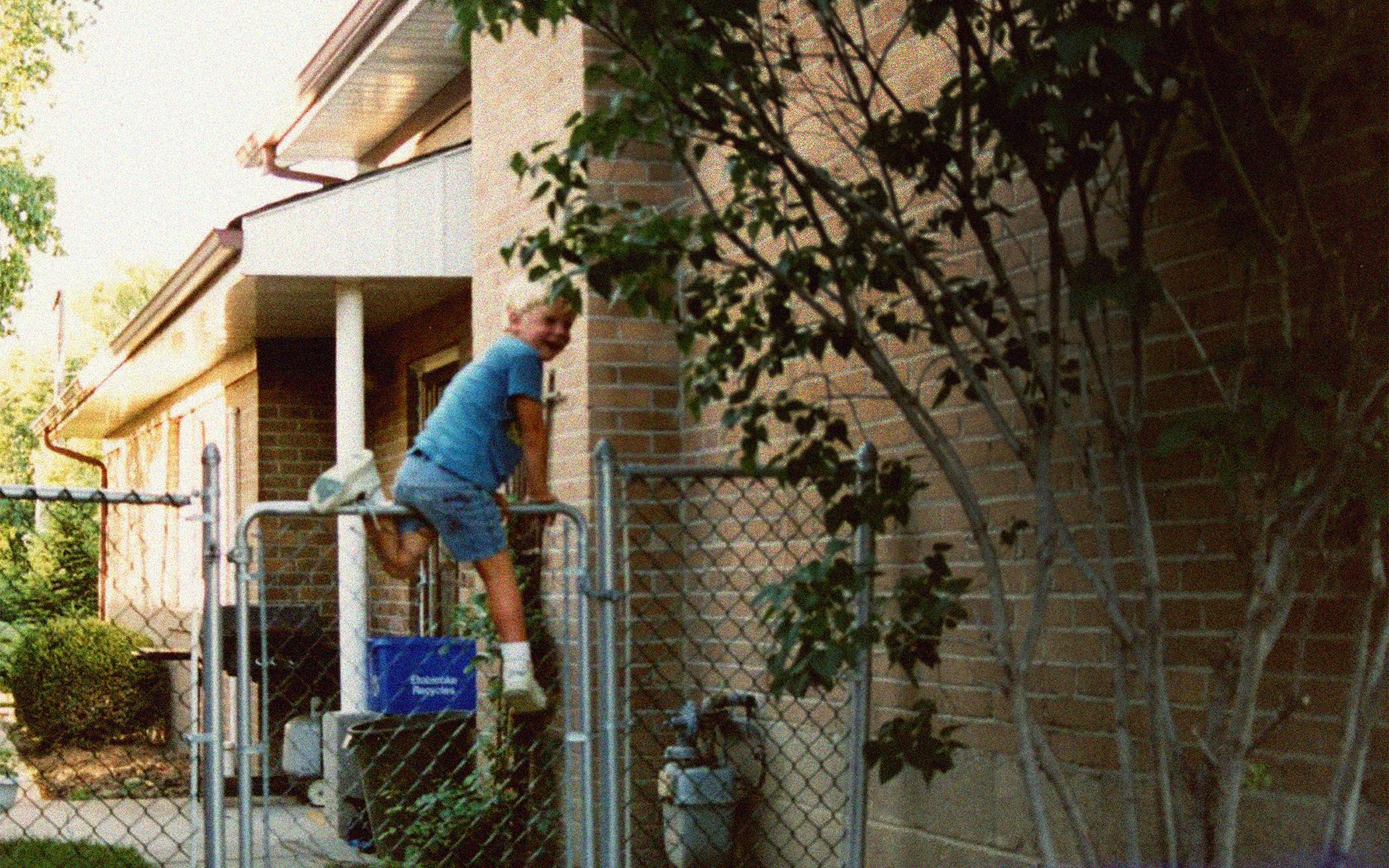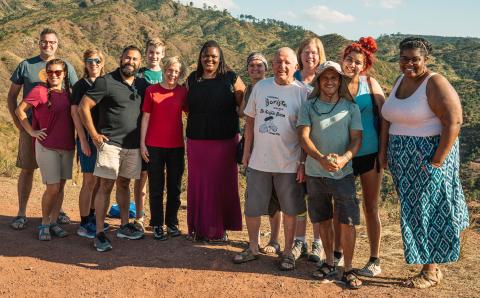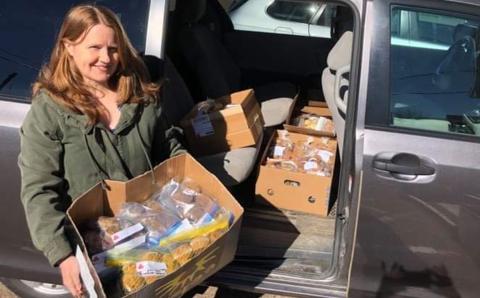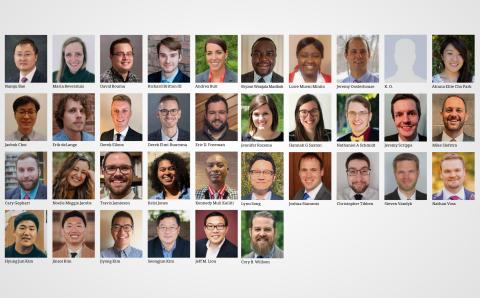On March 25, 1987, we lost our youngest child. Gone forever was the 2-year-old, blond-haired, blue-eyed joy named Steven Richard. We prayed, our community prayed, our family prayed that God would heal him, but that didn’t happen.
We didn’t have a funeral. Instead we all just kept praying that God would bring back the little boy we knew and loved. Perhaps we would get a Lazarus miracle.
It didn’t happen.
Eventually, we just stopped praying for that miracle. Steven was no longer on the weekly prayer list in the church bulletin. Everyone’s lives but ours seemed to go back to normal. All the hopes and dreams we once held for a wonderful boy had died. We had a death without a funeral.
You see, Steven is still with us. He’s 35 years old, a hulk of a good-looking man with the cognitive level of a 16-month-old. He doesn’t speak, wears diapers, and must be supervised every minute of his waking hours.
But our Steven, the one I had given birth to, is gone. At age 2, he suffered what are called status seizures. They went on in his brain for more than 18 hours, long after doctors had put him in a comatose state to relieve his body of the physical trauma. Five days later, he emerged from the coma, changed forever. No cause was ever determined.
Do we love the Steven we still have in our lives? Yes! Does he bring joy to those who love him? Of course! But anyone who has met him after 1987 has not experienced the profound loss that those of us who knew him from birth live with.
What do we do with that loss? You can’t really have a funeral for someone who is still living. Yet a loss like this is in fact a death in the family.
Ambiguous Loss
I recently came across two books that told me what we have experienced has a name: ambiguous loss. It’s a loss that has no finite end short of actual physical death, a loss not unlike what many people experience when caring for a loved one with Alzheimer’s disease, or one who has had a stroke, or one like Steven who has had a traumatic brain injury.
The first book is Hit Hard: Our Family’s Journey of Letting Go of What Was—and Learning to Live Well with What Is, by Pat and Tammy McLeod, chaplains at Harvard University. They wrote the book after their 18-year-old son received a devastating brain injury on the football field. Through that book I found Ambiguous Loss: Learning to Live with Unresolved Grief, by Pauline Boss, who spent decades researching and talking with people who have experienced ambiguous loss. Boss calls such ambiguous loss the most difficult of all losses because there is no closure.
Boss also noted that “if uncertainty continues, families often respond with absolutes, either acting as if the person is completely gone or denying that anything has changed.” That was evident in the McLeods’ story, and it certainly resonated in our family. For several years, my husband, Gary, and I couldn’t seem to get on the same page.
For the next six years, I was Steven’s champion. I attended endless doctors’ appointments. I drove him to physical therapy, occupational therapy, speech therapy, sensory integration therapy. When Steven came out of his coma, he couldn’t sit, stand, see, hear, speak. Over a few months, he sat, stood, walked, and eventually ran. He regained sight and hearing. Obviously he was making progress, so it was only a matter of time before he regained speech and cognitive understanding.
Except that he didn’t.
As I navigated the medical systems, determined by sheer force of will that this would get better, Gary withdrew further and further into loss and sadness. For a person with a visceral need for calm and predictability, living with chaos on two ever-growing legs was devastating. He did everything he could to help and to cope. But sadness enveloped him. He had lost his son.
It didn’t help that every new therapy we tried would give us hope but then plummet us back to hopelessness when it didn’t work. Facilitated communication would surely unlock Steven’s brain and allow him to communicate with us. But it didn’t. picture communication symbols: ditto. Signing: double ditto.
And then there were Steven’s older brothers, one five years older than Steven, the other two years older. No carefree childhood for them. Theirs became a life of vigilance. Leaving a front door or a back gate ajar was not just an annoyance. It was a threat to Steven’s safety. Having friends over much was difficult—it’s hard to explain to a friend why your brother just threw his orange juice across the table. As parents, we were available to them only through a haze of emotions and worries dominated by their brother.
Begging for Help
Then we moved to a different part of the province. The support of our beloved caregiver, who helped us more than she was ever paid for, was gone. Our supportive church community and friends were no longer close by. Steven required one-to-one supervision every waking hour. The people in our new community did what they could, but Steven’s needs were so overwhelming that even paid workers worked only a shift or two before quitting. We would hang on by our fingernails till the appointed hour when a worker would come and give us three hours off, and then the worker would call an hour beforehand and say, “Sorry, I just can’t do this.”
Teachers and aides at his school had a stretch where they wore helmets for their own protection. Attempts to force Steven to do something he didn’t want, like have a diaper change, could be met with kicking, biting, and pinching. A boy who could give me a black eye was not the boy I had given birth to.
We pleaded with our social services caseworker for more money to hire more help. All we could get was enough to pay for 10 hours a week of help at minimum wage when what we needed was more like 70 hours a week.
When Steven was 8 years old, I knew I was headed for a crisis. We had managed to find a respite bed in a nearby city for one week so we could travel to Michigan to take Steven’s brothers to visit my parents. As we drove the 10 hours home, I dreaded picking up Steven more and more the closer we got. I finally knew we had reached the end. Living with that level of stress was simply unsustainable. It was like a slow-motion breakdown for me.
We begged the Children’s Aid Society (similar to Child and Family Services) to take him, to find a placement—anything. They refused, saying they could not take in a well-cared-for child. So we did the unthinkable. We abandoned him. We orchestrated the event by having a friend bring him to the CAS office while we left town. We were unreachable. It took all day, but finally the CAS took him. After a few days, reassured we would not be arrested for child abandonment, we returned home.
Steven was placed in a series of respite locations and a few weeks later was placed with a good foster family who looked after only him. When the first family retired, he received another good placement. They have workers who were paid to look after him for several hours almost every day. Finally he had the support we were not able to obtain.
But it came at a price, another ambiguous loss perhaps even worse than the first. Steven was still our son, but now others were acting as his parents. Was I still his mother? Good mothers do not abandon their children.
Never a Right Answer
The tables turned in our marriage. The loss of Steven from our home made Gary long to see him, to have him stay at our house every weekend so we wouldn’t lose touch with him, to hear his infectious laugh. And every time I saw him, it was like ripping off the scab of a still very raw wound. In my reading, I discovered that this changing of roles and still being on different pages is not uncommon.
Eventually I was hospitalized with severe depression brought on by trauma. Boss describes such trauma as similar to post-traumatic stress disorder except “it is not post-anything.” The trauma doesn’t end.
With help from doctors, Gary and I came to an agreement on how much I would see Steven. Sometimes that meant Gary would go see him alone. Other times it meant Steven would come to our house, but I would go stay with a friend for the weekend. Later on we started having Steven visit once every three weeks, but only for one night instead of the whole weekend.
That continued until about three years ago when Gary, due to a serious illness, could no longer provide primary care that included strenuous tasks such as corralling a grown man who didn’t want to be corralled just to put him in the car. Steven had long since grown too strong to be physically contained by one person. And when we did have to take him on together with physical force, we were once again emotionally devastated.
Although we no longer regularly have Steven in our home, Gary continues to spend time with him throughout the year. They’ll take long, slow drives in the countryside. I see Steven very little except in the summer, when his worker brings him to our house most afternoons to let him enjoy our pool and the freedom to run in a completely enclosed backyard. Sometimes I choose to be outside to enjoy his presence. Sometimes I don’t.
Some might question my choices. For now, this is what works for us. “It’s not a question of having the right answer,” wrote Boss. We must keep creating “the best possible answer for the moment, and know that process will not stop as long as we live.”
We still grieve. His birthdays especially are a time of ambiguity. We want to celebrate him, but we will never get over the loss of him.
Not All Loss
It isn’t all loss. I have learned a lot about what it means to be a child of God regardless of what gifts or skills one brings to the table. By worldly standards, Steven brings nothing to the table, yet he is every bit as much a child of God as the rest of us. He has the capacity to bring joy to people just by being who he is, not by what he can do. He is an image bearer simply by being who he is. That’s a tough lesson for a results-oriented person like me.
Our marriage has survived and even thrived, though statistics tell us that 85% of marriages end in the face of the death or traumatic illness of a child. We can now mostly find our way to the same page of our loss and grief.
I don’t know how Steven’s brothers feel about what happened in our family. We don’t really talk about it. But I know they have become adults with incredible empathy for people who are marginalized, whether socially or mentally or physically or emotionally. One son gives special care to the people he sees every day who live on the street. Steven’s other brother is actively involved in his church’s Friendship Group and brings his oldest daughter, age 9, so she will learn to be a friend and mentor. Both brothers insisted that Steven be present at their weddings, knowing he could end up being very disruptive. Both of them traveled from a distance to see Steven’s graduation ceremony when he aged out of the special needs school at 21.
Our three grandchildren see their uncle Steven a lot in the summer and simply accept him as he is. Ever excited and eager to have pool fun with Uncle Steven, they can also sense when he needs to be left alone. After bringing up children in a household so fraught with emotional chaos, the grandchildren are a balm to my Steven-scarred soul.
The healing we prayed for did not come in the form we had hoped for. Healing will never be complete on this side of heaven. But healing has come to each of us in different ways.
It’s an ambiguous healing, just as it is an ambiguous loss. It isn’t perfect or “right.” But for now, for today, it is enough.
Discussion Questions
- Have you experienced an ambiguous loss or known someone who has? Describe the experience.
- How do we show grace and compassion to families, marriages, or relationships torn by difficult crises?
- How can the local church community be a support for and minister to families or individuals facing such crises in their lives?
- Talk about your experiences or observations of ambiguous healing—moments of healing that may be different from what you anticipated.
About the Author
Gayla Postma retired as news editor for The Banner in 2020.








